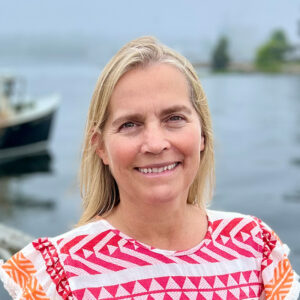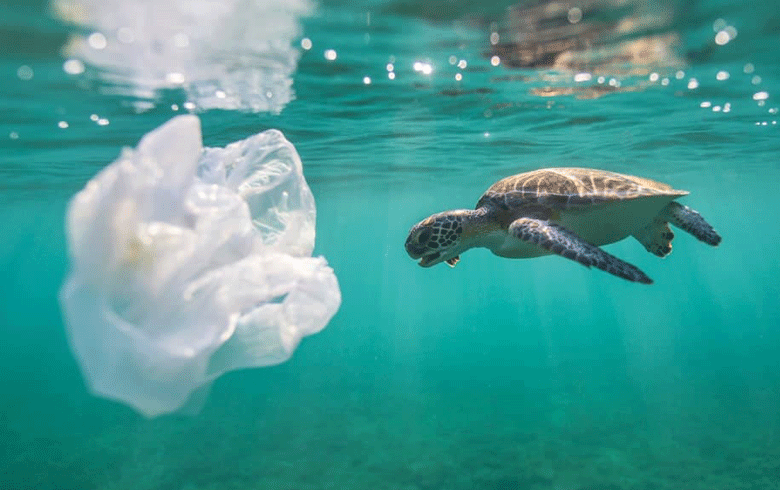As I stood on the Rockland breakwater, trying to pry a piece of Styrofoam from between two boulders, my Island Institute co-workers scoured the beach, picking up trash as part of the Maine Coastal Cleanup Program.
With teamwork, we finally freed that stubborn piece of plastic and I felt a wave of relief wash over me—especially as shorebirds flitted about, preparing for their migration south.
Having worked as a seabird biologist earlier in my career, I understand the crucial role of removing plastic from the ocean.
Although studies on the impact of plastic on Maine’s seabirds are limited, I’ve collaborated on some research that reveals a troubling trend: Maine seabirds, just like birds around the world, are ingesting plastic, and this can lead to their demise. Seabirds act as canaries in the “ocean coal mine,” highlighting the broader issues affecting marine ecosystems.
Scientists estimate that between five to 125 trillion pieces of plastic larger than a grain of salt are currently in our oceans.
About half of this plastic floats, allowing it to travel via river currents and oceanic circulation.
While most plastic washes ashore or sinks within a month, some plastic bottles have been traced thousands of miles away from their origin, influenced by storms and currents.
Researchers have discovered plastic lunch bags seven miles deep in the Mariana Trench.
In regions where currents converge, such as the notorious Great Pacific Garbage Patch, the scale of the problem becomes evident—it’s currently estimated to be twice the size of Texas (620,000 square miles).
Even the plastic that sinks can travel significant distances. For instance, researchers have discovered plastic lunch bags seven miles deep in the Mariana Trench. Plastic is incredibly durable; a grocery bag can take 20 years to decompose, while a toothbrush or coffee pod may take up to 500 years.

Unfortunately, as plastic breaks down, it fragments into smaller pieces, making it easier for wildlife to ingest.
Plastic poses a deadly threat to marine life. While I won’t dwell on this, it’s important to acknowledge that ocean plastic is a significant hazard for endangered species like seals, turtles, and seabirds. We need to do better in cleaning up our oceans and addressing our plastic consumption.
That said, it’s essential to recognize the remarkable utility of plastic. Since 1869, plastic has served various beneficial purposes: replacing ivory in billiard balls, enhancing food safety, insulating homes, and even improving healthcare with products like syringes and heart valves. Its many life-enhancing uses are integral to modern life, yet we must use it more responsibly and explore environmentally friendly alternatives.
Maine is leading the way in responsible plastic use. Our regulations on single-use plastic bags and foam containers, along with the pioneering Extended Producer Responsibility for Packaging law, position us as a national leader in environmental policy.
Moreover, we are innovating in alternative plastic production, utilizing abundant local resources like wood, mushrooms, and seaweed—which we are skilled at growing in Maine. It is particularly exciting when we ponder what this could mean for the diversification of our timber and aquaculture industries as well as possible uses we can employ right here in Maine.
For example, we might replace the plastic we purposely put into the ocean in the form of buoys, bait bags, and rope used in our maritime industries. Mushroom buoys are being actively tested and used in aquaculture and the lobster industry and seaweed replacements are not far behind.
By literally growing the material by which we can reduce plastic in the ocean, Maine is not only tackling the plastic pollution problem but also paving the way for a more sustainable future. With continued effort and innovation, we can protect our oceans and wildlife for generations to come.
Jennifer Seavey is the chief programs officer at Island Institute, publisher of The Working Waterfront. She may be contacted at jseavey@islandinstitute.org.





